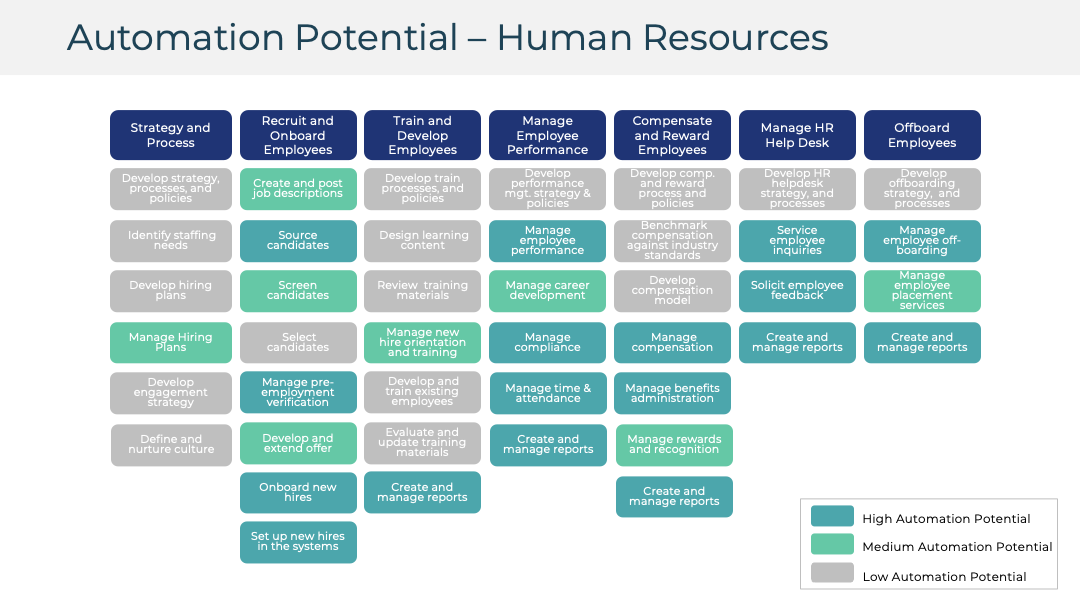I wanted to expand on the recent blog post, The "Great Resignation" got you worried? It's time to think about automation. One area that is really impacted by this movement is in the retail industry – an industry already reeling from the pandemic.
While the average employee turnover for all U.S. industries is around 19 percent, the average turnover rate in the retail industry is just above 60 percent, according to the National Retail Federation. This equates to a continual cycle of rehiring and retraining, with negative impact to retailers’ bottom lines.
Employee retention is not a new phenomenon; there has always been a challenge to retain competent and loyal employees.
Although I do not want to discuss the pandemic, it is a large percentage of why we see overwhelming turnover rates – however this is not the only reason. Historically, we have seen reasons such as pay, benefits, poor management, non-performance, on-boarding time, and more importantly a lack of growth opportunities especially with jobs having to deal with back-office tasks.
Retail human resource departments across the U.S. are overwhelmed with the sheer number and frequency of employees records that require onboarding or off-boarding tasks. In fact, the number is astonishing. Retailers have told us they are seeing as many as 600 employees onboarded and off-boarded per week and the trend continues upwards with no end in sight.
Human resource departments have to deal with multiple process, systems and, of course, plenty of Excel spreadsheets. These are time consuming, tedious tasks requiring heavy manual effort.
This is where RPA-automation can provide significant value.
RPA is not about reducing employee headcount! RPA technology has matured, automating tedious tasks is about a new and more collaborative attitude — humans and digital bots working together in a way that benefits humans, the bots, and the organization as a whole!
RPA is not about FTE reduction, it is about:
- Digital workers (bots) providing a competitive advantage
- Additional capacity to support growth
- Allowing employees to build the business vs. running the business
- Increase business agility and responsiveness
- Easily handle "business spikes"
- Increase employee retention in tough hiring markets
- Increasing employee job satisfaction and happiness!
Being able to automate these mundane tasks by leveraging RPA will also allow human resource departments to hire with more operationally efficiency and cost effectiveness.
When it comes to offboarding employees, you have the same mundane tasks as onboarding. Both require multiple systems, processes, and more importantly, compliance implications, such as ensuring downstream systems are deactivated or returning company property such has badges, laptops, etc. If not properly offboarded, a former employee may not be deactivated in a system and may still have access to systems, data, opening the door for serious financial, operational, and security risks.
RPA is a strategic technology that allows a “bot” to emulate the actions of a human interacting with digital systems to execute a business process. RPA solutions can be applied to new employee onboarding and offboarding processes in order to take care of repetitive tasks as well as meeting SLAs and compliance.
Human resource automation using RPA allows you to reduce all the manual tasks related to time-consuming HR processes, not only for onboarding and offboarding, but for payroll processing, compensation changes, employee communication, and recruitment processes.
See the sample Diagram of HR Automation Potential for Human Resources:

In a recent survey Optezo conducted, over 80% of business and technology leaders said automating processes is essential to ongoing business success.
To succeed today and in the future, companies will need to reduce operational costs, gain efficiencies, and move mundane tasks away from employees who should be spending their time on more valuable tasks.
Optezo helps organizations realize the value of enterprise automation using RPA to streamline back-office tasks in weeks!
Interested in learning more about what makes us different and how our clients start saving time and money in weeks? Let's schedule a quick 30 minute call to review these use cases and how they can apply to your organization.
